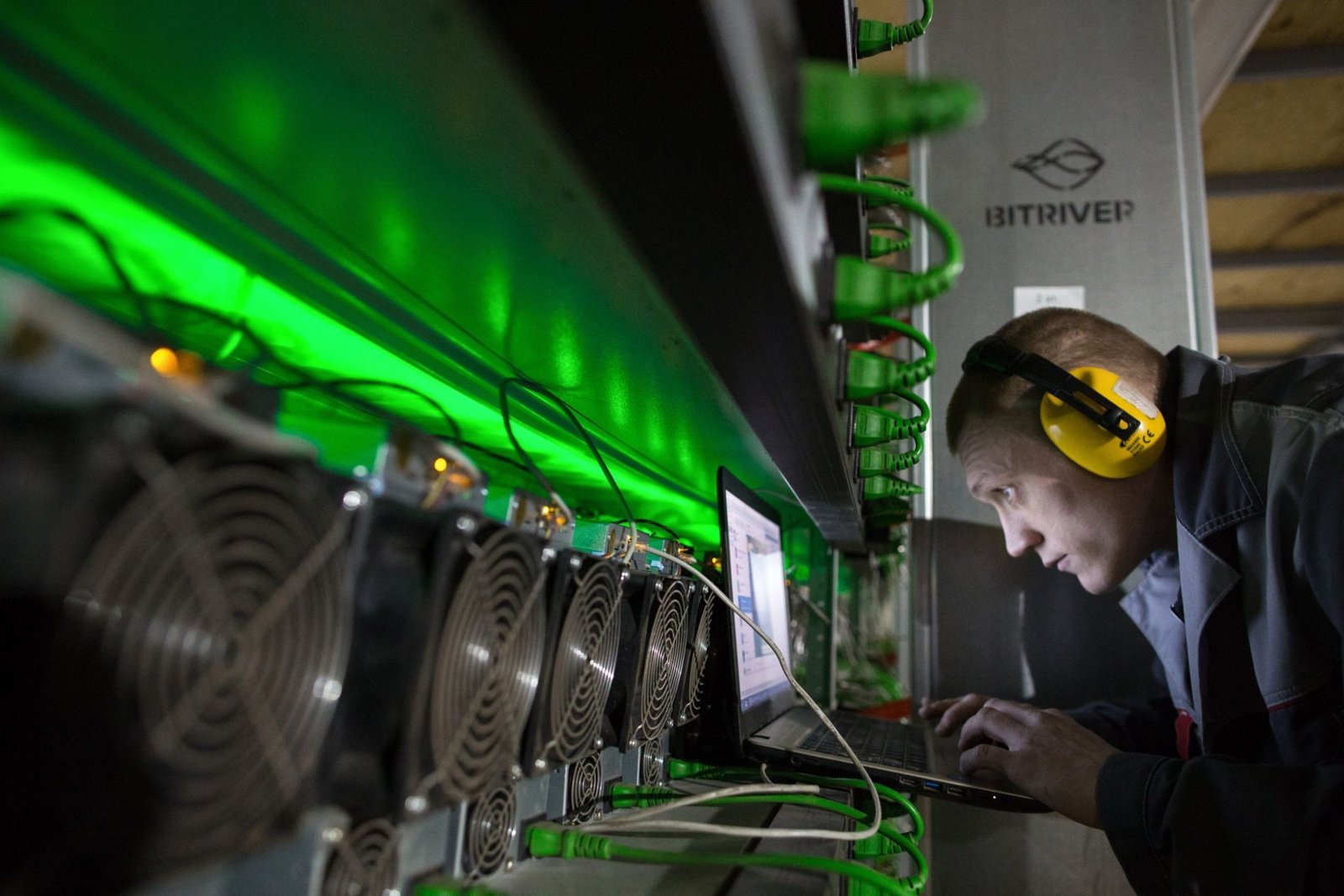The cryptocurrency mining landscape has evolved dramatically, making a comprehensive Bitcoin mining equipment comparison essential for anyone considering entering this competitive field. With Bitcoin’s price volatility and increasing mining difficulty, selecting the right hardware can determine the difference between profitable operations and costly mistakes. This detailed Bitcoin mining equipment comparison will analyze the top ASIC miners, their performance metrics, energy efficiency, and return on investment potential. Whether you’re a beginner exploring mining opportunities or an experienced miner looking to upgrade your setup, understanding the nuances of different mining equipment is crucial for making informed decisions in today’s market.
Why Bitcoin Mining Equipment Comparison Matters in 2025
The Bitcoin mining industry has become increasingly sophisticated, with manufacturers constantly releasing new models that promise better hash rates, improved energy efficiency, and enhanced profitability. A thorough Bitcoin mining equipment comparison helps miners navigate this complex landscape by providing objective data on performance, costs, and potential returns. Modern mining operations face several challenges that make equipment selection critical. Rising electricity costs, increasing network difficulty, and the need for competitive hash rates mean that choosing the wrong equipment can quickly lead to unprofitable operations. Additionally, the upcoming Bitcoin halving events and regulatory changes in various jurisdictions add layers of complexity to mining decisions. The key factors that make equipment comparison essential include hash rate performance, power consumption efficiency, initial investment costs, maintenance requirements, and long-term durability. These elements directly impact profitability and operational sustainability.
Top ASIC Miners: Performance Analysis and Comparison
Antminer S19 Pro Series Analysis
The Antminer S19 Pro series represents one of the most popular choices in current mining operations. With hash rates ranging from 95 TH/s to 110 TH/s, these miners offer solid performance for medium to large-scale operations. The S19 Pro’s power efficiency of approximately 29.5 J/TH makes it competitive in markets with moderate electricity rates. Key specifications include robust build quality, relatively quiet operation compared to older models, and proven reliability in extended mining operations. The initial investment typically ranges from $3,000 to $5,000 depending on market conditions and availability. However, the S19 Pro faces competition from newer models offering better efficiency ratios. The heat generation requires adequate cooling solutions, and the power consumption of around 3,250W necessitates proper electrical infrastructure.
WhatsMiner M30S+ Performance Review
The WhatsMiner M30S+ series offers competitive alternatives to Antminer products, with hash rates reaching 112 TH/s in optimal conditions. These miners are known for their stability and consistent performance over extended periods. The power efficiency of approximately 31 J/TH positions them well for operations in regions with lower electricity costs. Notable features include modular design for easier maintenance, effective heat dissipation systems, and compatibility with various mining pool configurations. The M30S+ typically requires less frequent maintenance compared to some competitors, reducing operational overhead. The main considerations include higher initial costs compared to some alternatives and the need for adequate ventilation due to substantial heat output. Power requirements of around 3,472W demand robust electrical systems.
Antminer S19 XP: Next-Generation Mining Technology
The Antminer S19 XP represents cutting-edge mining technology with hash rates up to 140 TH/s and improved power efficiency of 21.5 J/TH. This model targets high-end mining operations prioritizing maximum performance and energy efficiency. Advanced features include enhanced chip architecture, improved cooling systems, and optimized power management. The S19 XP’s superior efficiency makes it suitable for operations in regions with higher electricity costs, potentially maintaining profitability where older models cannot. Challenges include premium pricing, limited availability, and higher upfront investment requirements. The advanced technology also means potentially higher maintenance costs and the need for specialized technical knowledge.
Power Consumption and Efficiency Metrics

Understanding Energy Efficiency in Mining Operations
Energy efficiency represents the most critical factor in modern mining profitability. Measured in joules per terahash (J/TH), this metric determines operational costs and long-term viability. Lower J/TH values indicate better efficiency, directly translating to reduced electricity expenses. Current market leaders achieve efficiency rates between 20-35 J/TH, with newer models consistently improving these figures. For operations in regions with electricity costs above $0.10 per kWh, efficiency becomes even more crucial for maintaining profitability. Efficiency improvements also contribute to reduced environmental impact, addressing growing concerns about cryptocurrency mining’s carbon footprint. Many mining operations now prioritize efficient equipment as part of sustainable mining practices.
Calculating Real-World Power Costs
Accurate power cost calculations require considering multiple factors beyond the advertised power consumption. Actual consumption often varies based on operating conditions, ambient temperature, and power supply efficiency. Additionally, cooling costs can add 20-30% to base power consumption in warm climates. Power infrastructure costs including electrical upgrades, circuit installations, and safety equipment represent significant additional investments. Professional electrical work is often required for safe operation of high-power mining equipment, adding to initial setup costs. Long-term power contracts and renewable energy options can significantly impact operational costs. Some mining operations achieve competitive advantages through strategic power sourcing and demand management programs.
Profitability Analysis: ROI and Break-Even Calculations
Current Market Profitability Factors
Bitcoin mining profitability depends on multiple dynamic variables including Bitcoin price, network difficulty, electricity costs, and equipment efficiency. Current market conditions show varying profitability across different equipment types and operational scales. Network difficulty adjustments occur approximately every two weeks, directly affecting mining rewards and profitability. Higher difficulty means reduced rewards for the same hash rate, emphasizing the importance of efficient equipment for maintaining competitive operations. Market volatility adds complexity to profitability calculations, requiring miners to consider various price scenarios and risk management strategies. Conservative projections typically assume gradual difficulty increases and moderate price stability.
Break-Even Analysis Methodology
Calculating break-even points requires comprehensive analysis of all costs including equipment purchase, installation, electricity, maintenance, and facility expenses. Simple payback period calculations often underestimate total costs and operational complexities. Dynamic break-even analysis considers changing market conditions, equipment degradation, and varying operational costs over time. This approach provides more realistic projections for investment decisions and operational planning. Risk factors including equipment failure, market downturns, and regulatory changes should be incorporated into break-even calculations. Conservative estimates help ensure sustainable operations even under adverse conditions.
Installation and Setup Requirements

Infrastructure Considerations for Mining Operations
Proper infrastructure forms the foundation of successful mining operations. Electrical systems must handle high power loads safely and efficiently, requiring professional installation and regular maintenance. Adequate ventilation and cooling systems prevent equipment overheating and extend operational life. Space requirements vary significantly based on operation scale and equipment choices. Home mining setups require different considerations than industrial-scale facilities, including noise management, security, and residential electrical limitations. Internet connectivity and network reliability ensure consistent mining operations and minimize downtime. Backup power systems can prevent revenue loss during power outages, though they represent additional investment and maintenance costs.
Professional Installation vs. DIY Setup
Professional installation offers expertise in electrical work, ventilation design, and safety compliance but increases initial costs. DIY installations can reduce expenses but require technical knowledge and careful attention to safety requirements. Local electrical codes and regulations may mandate professional installation for high-power equipment. Permit requirements and inspection processes vary by jurisdiction and should be researched before equipment purchase. Insurance considerations may favor professional installation, as some policies require certified electrical work for coverage. Professional installation also typically includes warranties and ongoing support services.
Maintenance and Operational Costs
Routine Maintenance Requirements
Regular maintenance ensures optimal equipment performance and extends operational life. Tasks include cleaning air filters, monitoring temperatures, updating firmware, and inspecting electrical connections. Preventive maintenance reduces costly emergency repairs and unexpected downtime. Component replacement schedules vary by manufacturer and operating conditions. Fans, power supplies, and hash boards represent common replacement items with predictable lifecycles. Maintaining spare parts inventory helps minimize operational disruptions. Environmental factors significantly impact maintenance requirements. Dusty conditions require more frequent cleaning, while high humidity may accelerate component degradation. Proper facility design reduces maintenance overhead and extends equipment life.
Long-Term Operational Considerations
Equipment degradation affects hash rate performance over time, gradually reducing profitability. Understanding degradation patterns helps plan equipment replacement cycles and maintain competitive operations. Technology advancement cycles mean newer, more efficient equipment regularly enters the market. Staying current with technological developments helps optimize upgrade timing and maintain competitive advantages. Operational scaling considerations include power infrastructure expansion, cooling system upgrades, and facility modifications. Planning for growth from the initial setup reduces future modification costs and operational disruptions.
Market Trends and Future Outlook
Emerging Technologies in Mining Hardware
Next-generation mining chips promise continued efficiency improvements and performance gains. Advanced manufacturing processes enable smaller, more efficient chips with reduced power consumption and heat generation. Immersion cooling technologies offer potential advantages for high-density mining operations, improving efficiency and reducing noise. These advanced cooling methods may become standard for large-scale professional mining facilities. Renewable energy integration continues growing as miners seek sustainable operations and reduced costs. Solar, wind, and hydroelectric power sources offer long-term cost stability and environmental benefits.
Regulatory Impact on Equipment Choices
Evolving regulations in various jurisdictions affect equipment selection and operational planning. Energy efficiency requirements, noise restrictions, and environmental standards influence suitable equipment choices for different markets. Some regions offer incentives for efficient mining operations or renewable energy use, affecting equipment ROI calculations. Understanding regulatory trends helps inform long-term equipment investment decisions. International trade policies and import restrictions can impact equipment availability and pricing. Diversified supplier relationships help mitigate supply chain risks and ensure consistent equipment access.
Budget Considerations and Financing Options

Initial Investment Planning
Equipment costs represent just one component of total mining investment requirements. Facility preparation, electrical upgrades, cooling systems, and operational setup add significant expenses to initial budgets. Bulk purchasing often provides cost advantages for larger operations, while individual miners may benefit from smaller-scale entry strategies. Equipment financing options can help manage cash flow and accelerate deployment timelines. Market timing affects equipment pricing and availability. Understanding market cycles and manufacturer release schedules can optimize purchase timing and cost management.
Financing and Lease Options
Equipment financing enables operations to begin with reduced upfront capital requirements. Lease agreements may include maintenance and upgrade provisions, simplifying operational management for some miners. Traditional bank financing may be limited for mining operations due to industry volatility. Alternative financing sources including equipment-specific lenders and cryptocurrency-friendly financial institutions offer additional options. Lease-to-own arrangements provide flexibility for upgrading to newer equipment while managing cash flow. These arrangements may include performance guarantees and maintenance services.
Conclusion
Selecting the optimal mining equipment requires careful analysis of multiple factors including performance metrics, operational costs, and market conditions. This comprehensive Bitcoin mining equipment comparison demonstrates that no single solution fits all mining operations. Success depends on matching equipment capabilities with specific operational requirements, budget constraints, and market expectations. The key to profitable mining lies in thorough research, realistic profitability projections, and ongoing operational optimization. As the mining landscape continues evolving, staying informed about technological developments and market trends ensures competitive advantages and long-term success.

















